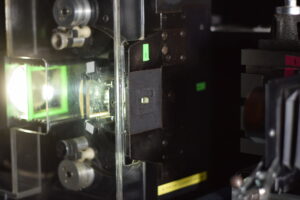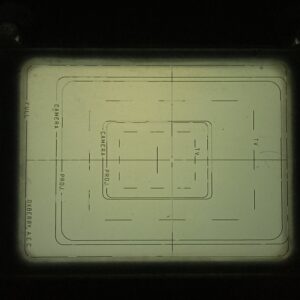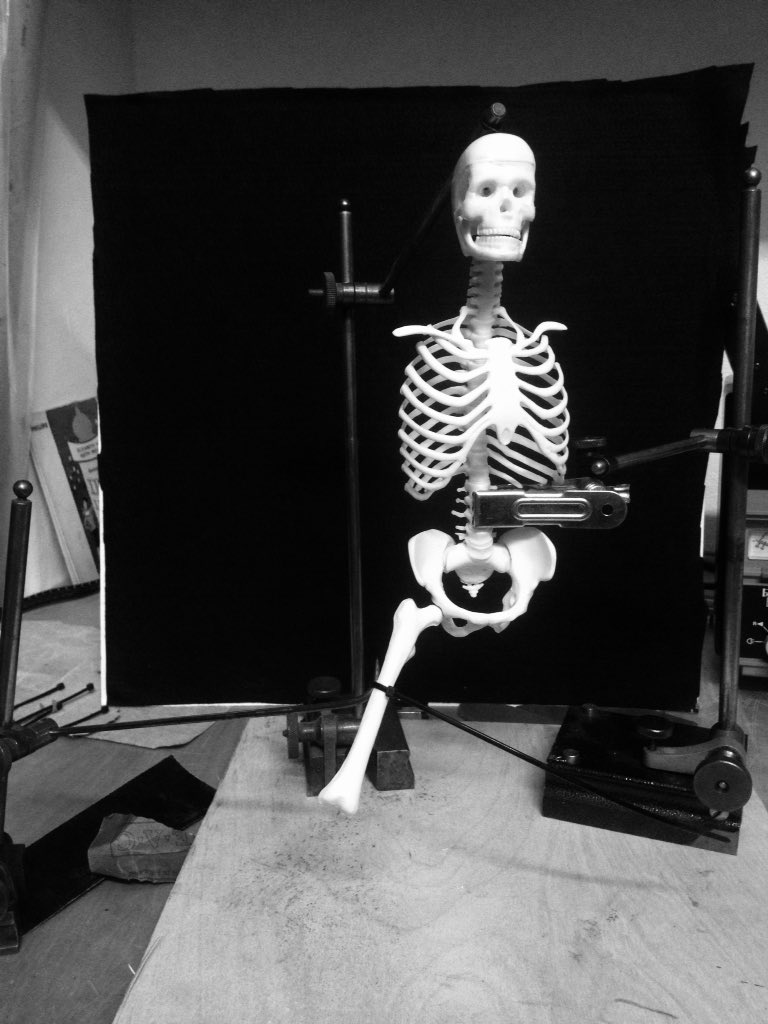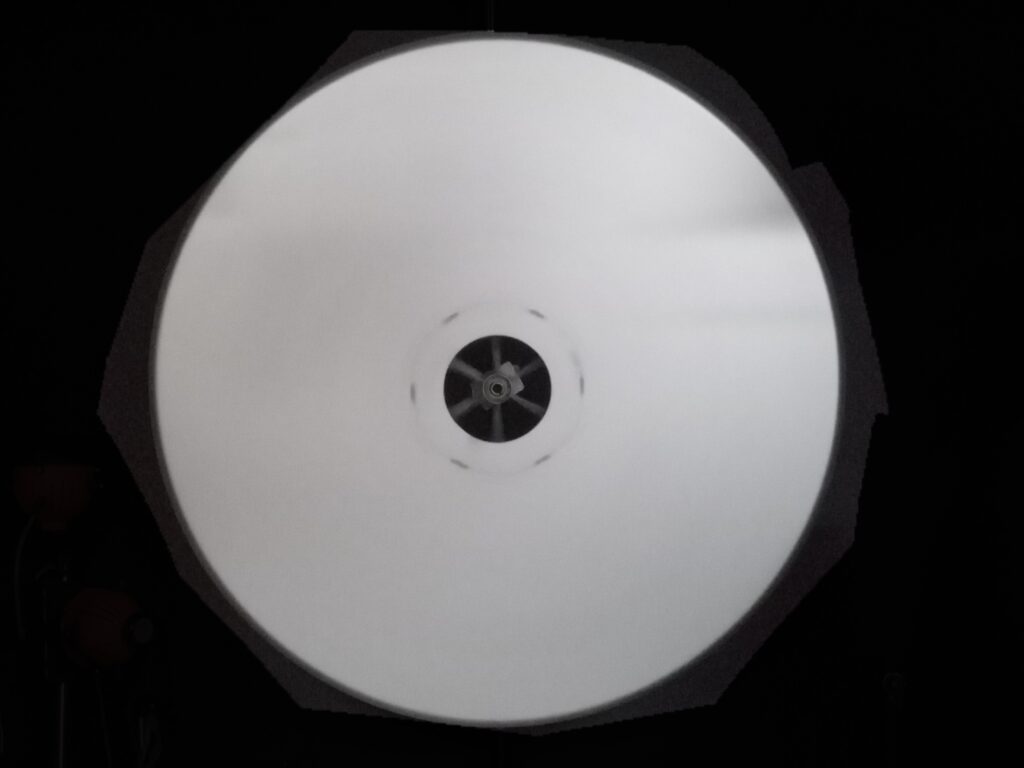Light and dark We know the light How well do we know the dark Like dreams A third of our life spent in them In film, 2 x 5ths spent in darkness Resting 2 x 5ths is 40% , which sounds more than a third. It is. Sounds closer to half It’s hard to think of the agency in the …
Continue Reading...
One interesting thing is how the fixing bolts for the blade part to fix to the base corresponds with the point of the angle of each segment of the shutter.
Continue Reading...
What does a 3 bladed shutter do differently from a 2? Nothing apart from project each frame 3 times, producing an image flicker frequency of 72hz. A 2 bladed shutter produces 48hz. If we chop off one of the blades in a 2 bladed shutter (not the pulldown mask obviously, unless we want this effect) we will get 24hz, …
Continue Reading...
Im trying to devise a way of describing flicker that is mathematically accurate. Frame rates as we understand them for example 24fps or 18fps are only one aspect of the whole picture delivery system. Firstly, often a frame is delivered twice, or three times so this produces a different phonomemalogical figure, say 48fps. But this figure only counts the …
Continue Reading...
Here are those numbers again in their roles as light and dark. Both 108 and 72 have interesting cultural meanings which you can look up for yourself, my only advice being to tread carefully but open yourself to all kinds of wonder. So, the magic number building block for the experiment to reinstate a virtual blade into digital versions of …
Continue Reading...
In the video tests in an earlier post you can see high speed video of a projected 35mm image using a single aperture blade on a Kinoton. After analysing the video its possible to say with some certainty that the RATIO of light to dark is 3:2 respectively. So there are 3 units (or steps, …
Continue Reading...
FLICKER WARNING. THE CLIPS BELOW ARE STROBOSCOPIC AND FLICKER AT RATES THAT MAY DISTURB THOSE WHO SUFFER FROM PHOTOSENSITIVE EPILEPSY. Heres some tests done using a high speed casio video camera aimed at the screen whilst projecting some 35mm. The Kinoton used has a 180 degree blade so we need to get the data about how many ‘pulses’ per frame …
Continue Reading...
FLICKER WARNING. THE CLIPS BELOW ARE STROBOSCOPIC AND FLICKER AT RATES THAT MAY DISTURB THOSE WHO SUFFER FROM PHOTOSENSITIVE EPILEPSY. The purpose of these experiments is to regard the intrinsic opto-mechanical mode of presentation of motion picture film as if it was important to the overall ontological nature of ‘cinema’ which would include really the camera (also opto-mechnical) and various …
Continue Reading...
FLICKER WARNING. THE CLIPS BELOW ARE STROBOSCOPIC AND FLICKER AT RATES THAT MAY DISTURB THOSE WHO SUFFER FROM PHOTOSENSITIVE EPILEPSY. When we view a digital version of a work of early cinema our experience is notably different from when it would have been (could be) seen opto-mechanically. Of course digital viewing systems, whether DVD and CRT screen, Blu-Ray and …
Continue Reading...









